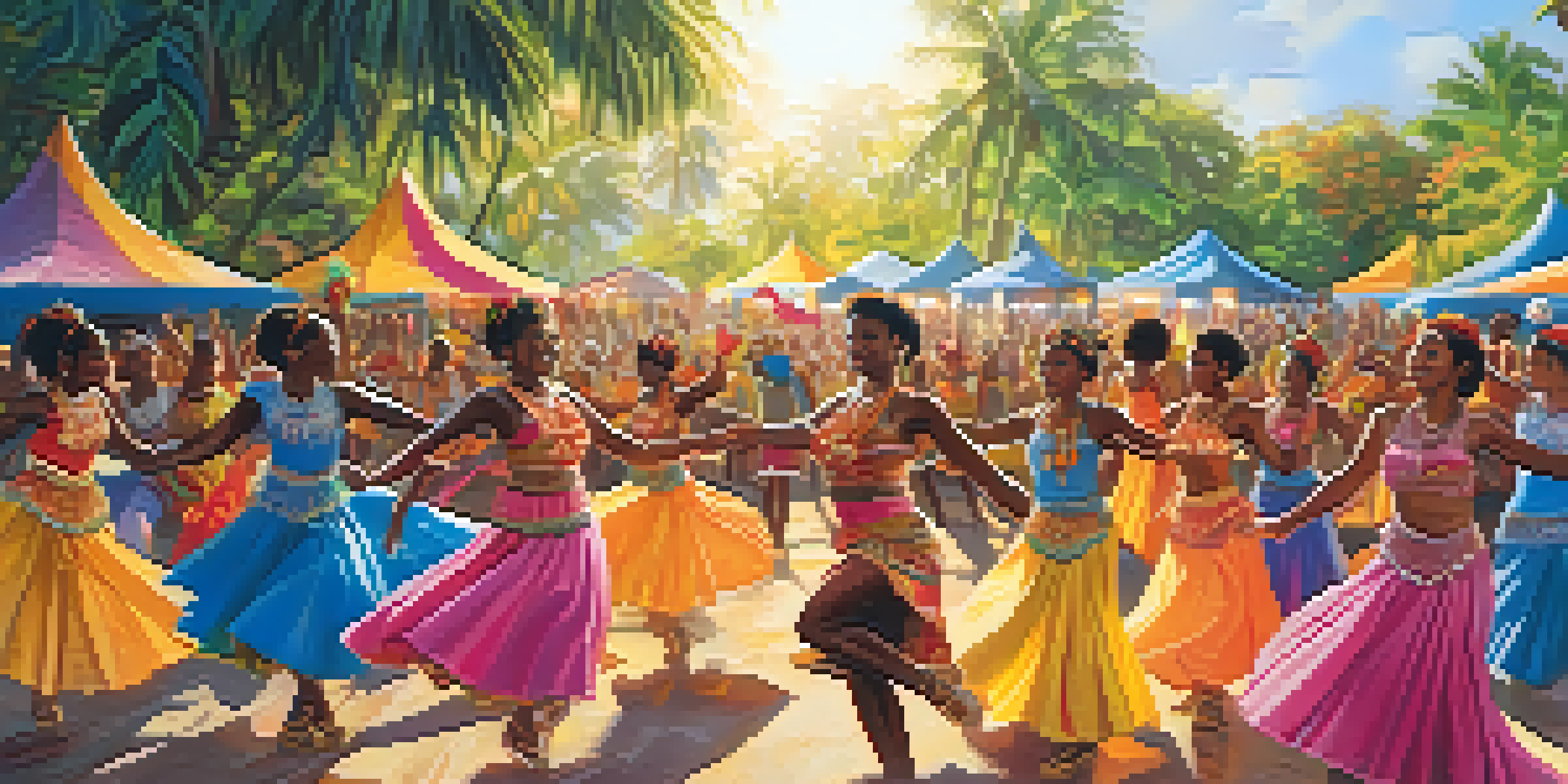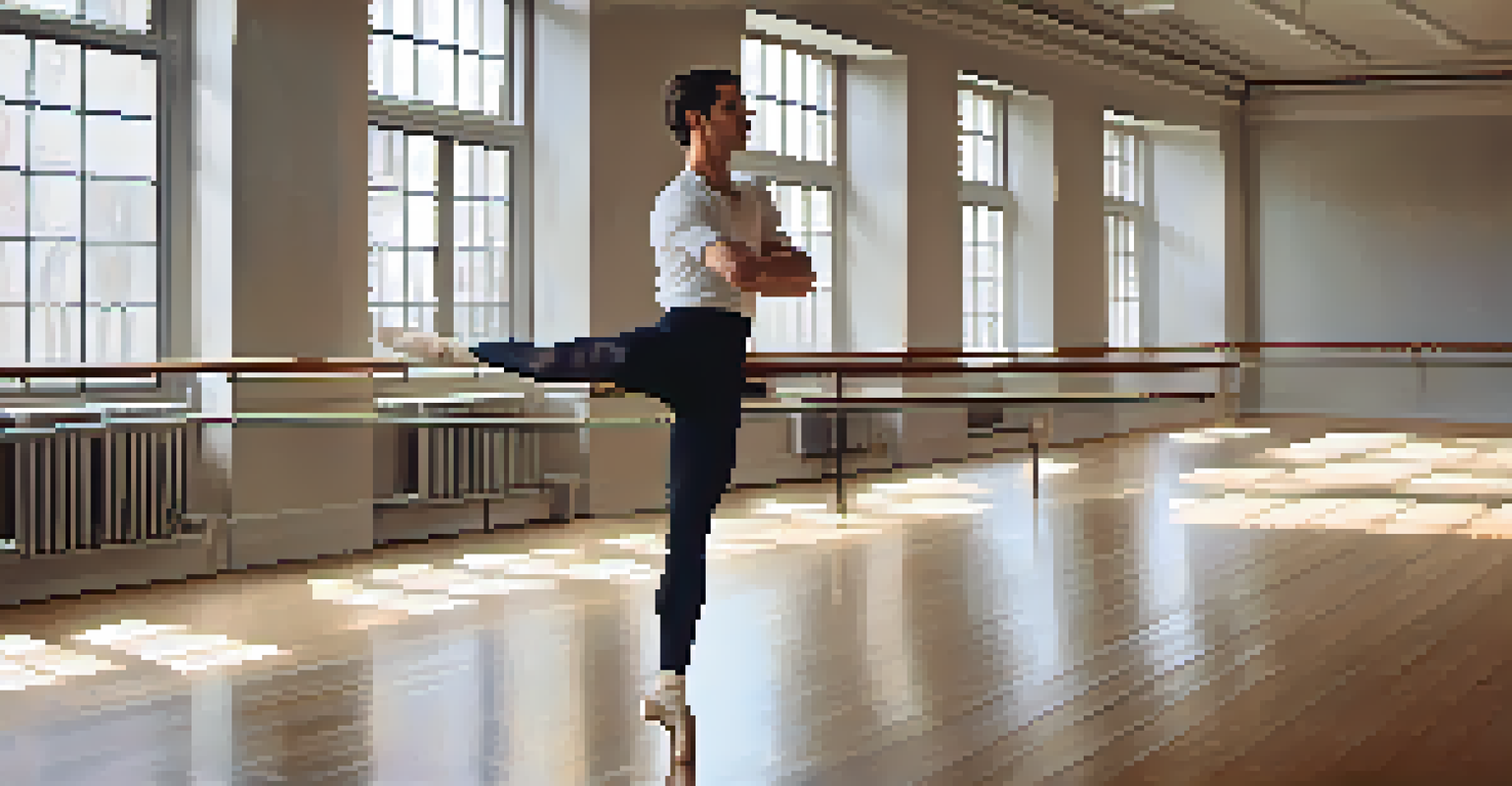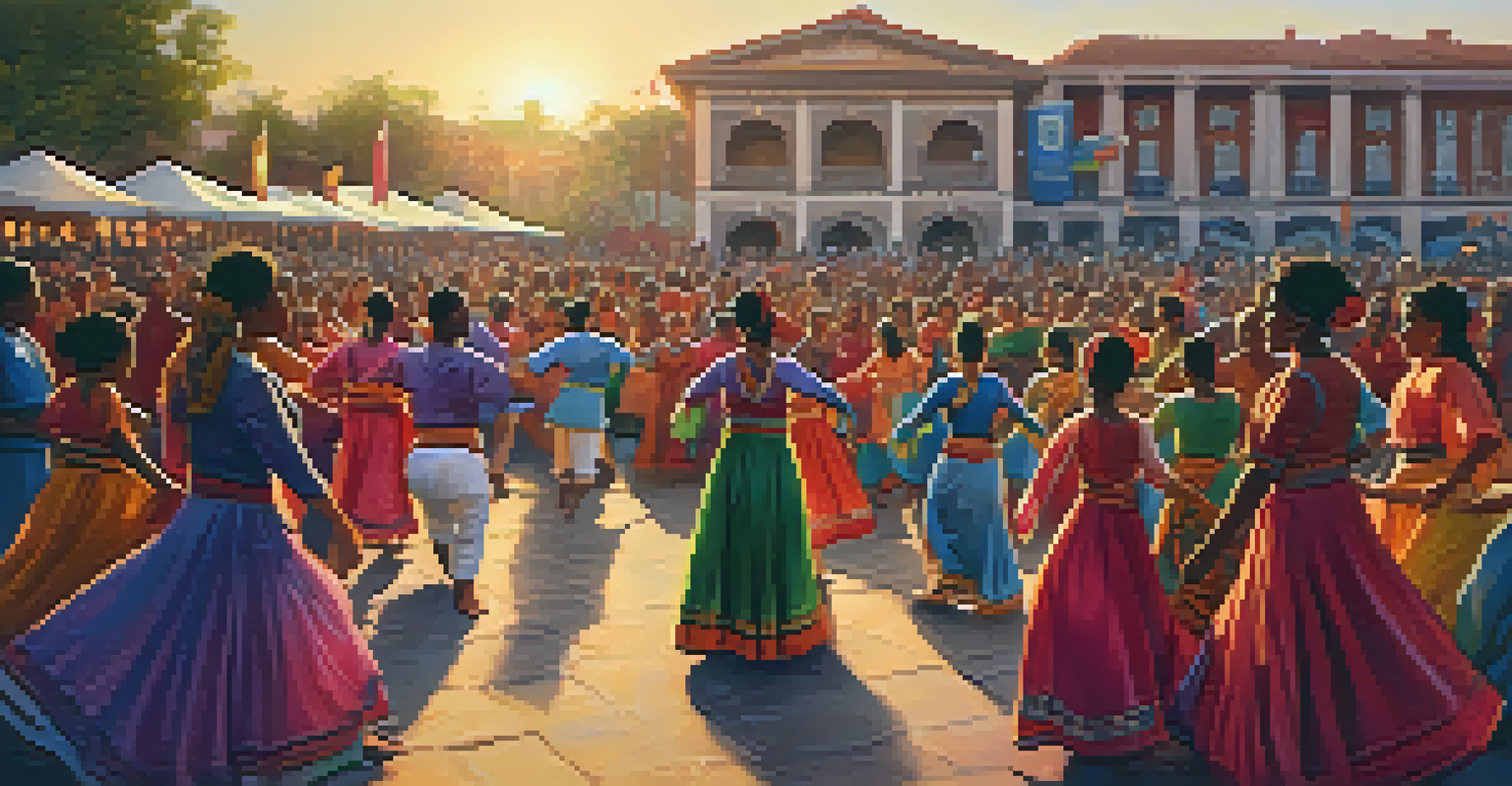The Intersection of Dance and Identity in Contemporary Fiction

Understanding Dance as a Form of Expression
Dance is more than just movement; it’s a profound form of self-expression. In literature, characters often use dance to convey emotions that words alone cannot capture. For instance, a character might dance to celebrate a triumph or express heartache, creating a visceral connection with the reader.
Dance is the hidden language of the soul.
Through dance, authors can illustrate the complexity of identity, as movements can reflect cultural backgrounds, personal struggles, or even societal expectations. This physical form of expression allows readers to visualize the nuances of characters’ identities, making their journeys more relatable.
By incorporating dance into storytelling, writers invite readers to experience the rhythm of life alongside their characters. Whether it's a waltz or a contemporary piece, the dance sequences serve as metaphorical representations of the characters’ internal conflicts and resolutions.
Dance as a Reflection of Cultural Identity
Cultural identity plays a significant role in how dance is portrayed in contemporary fiction. Different cultures have unique dance styles that convey their history, traditions, and values. Authors often weave these elements into their narratives to highlight the cultural backgrounds of their characters.

For example, a novel set in an Afro-Caribbean community may feature traditional dances during festivals, allowing readers to appreciate the vibrancy of that culture. Such depictions not only celebrate diversity but also raise awareness of the richness of cultural identities.
Dance as Self-Expression
Dance serves as a profound form of self-expression, allowing characters to convey complex emotions that words cannot capture.
When characters engage in specific dance forms, it can lead to a deeper understanding of who they are and where they come from. This connection fosters empathy in readers, bridging the gap between different cultural experiences and perspectives.
The Role of Dance in Personal Identity Development
In many contemporary fiction narratives, dance serves as a catalyst for personal growth and identity exploration. Characters often discover their true selves through dance, which can act as a transformative journey. This theme resonates with readers who may have faced similar struggles in understanding their identities.
Dance is the joy of movement and the heart of life.
For instance, a character might start dancing to cope with family issues or societal pressures, ultimately finding solace and empowerment in movement. This evolution often mirrors the real-life experiences of individuals who use dance as a means of self-discovery.
By highlighting the intersection of dance and personal identity, authors remind us that our journeys are often expressed through the art we engage with. Dance becomes a powerful metaphor for the search for authenticity in a world that often imposes labels.
Dance and Gender Identity in Fiction
Gender identity is another vital aspect explored through dance in contemporary fiction. Many authors use dance to challenge traditional gender roles, allowing characters to express themselves freely beyond societal constraints. This often leads to rich narratives that resonate with readers grappling with their own gender identities.
For instance, a story might feature a male character who finds liberation in ballet, defying stereotypes associated with masculinity. Such portrayals provide readers with a broader understanding of gender fluidity and the importance of self-acceptance.
Cultural Identity Through Dance
Dance reflects cultural identity by showcasing unique styles and traditions, fostering empathy and understanding among readers.
By showcasing diverse gender expressions through dance, authors contribute to the ongoing dialogue about gender identity and representation. This not only enriches the narrative but also empowers readers to embrace their identities.
Dance as a Means of Community and Belonging
In contemporary fiction, dance often symbolizes community and belonging. Group dances can represent unity, where characters come together to celebrate shared experiences or cultural heritage. This aspect of dance highlights the importance of connection in shaping identity.
For example, a story may depict a community gathering where traditional dances are performed, reinforcing the characters' ties to one another and their culture. Such scenes evoke feelings of nostalgia and pride, emphasizing how collective experiences shape individual identities.
By illustrating the role of dance in fostering community, authors remind us that our identities are often interconnected. This not only enriches the narrative but also reflects the reality that we often find ourselves through the bonds we share with others.
The Emotional Impact of Dance in Storytelling
The emotional impact of dance in storytelling is profound. Dance sequences can evoke a range of feelings, from joy and exhilaration to sadness and longing. Authors leverage this emotional weight to deepen readers’ understanding of character motivations and conflicts.
For instance, a poignant dance scene may be used to symbolize a character’s internal struggle, allowing readers to empathize with their pain or joy. This emotional resonance makes the narrative more engaging, as readers can feel the characters' experiences more intimately.
Dance and Personal Growth
In fiction, dance acts as a catalyst for personal identity exploration, helping characters discover their true selves through movement.
By incorporating dance as an emotional tool, authors create a symbiotic relationship between movement and narrative. This connection enriches the storytelling experience, inviting readers to explore the complexities of human emotion through the lens of dance.
The Future of Dance and Identity in Fiction
As contemporary fiction continues to evolve, the intersection of dance and identity is likely to grow more complex and nuanced. Writers are increasingly recognizing the power of dance as a narrative device, using it to reflect the changing dynamics of identity in our society. This ongoing exploration opens new avenues for storytelling.
Emerging authors are experimenting with different forms of dance and how they intersect with various identities, creating fresh narratives that resonate with diverse audiences. The future promises to bring even more innovative representations of dance, pushing boundaries and challenging norms.

Ultimately, the relationship between dance and identity in fiction will continue to serve as a mirror reflecting our lives, struggles, and triumphs. As readers, we can look forward to engaging with these rich narratives that celebrate the beauty and complexity of identity through the art of dance.